
Christ the Redeemer - Rio, Brazil
Landmarks can be natural wonders, man-made structures or just popular tourist sites that travellers like to visit. Here are some of the best that South America has to offer.
Christ the Redeemer, Sugarloaf Mountain and Copacabana Beach, Rio De Janeiro, Brazil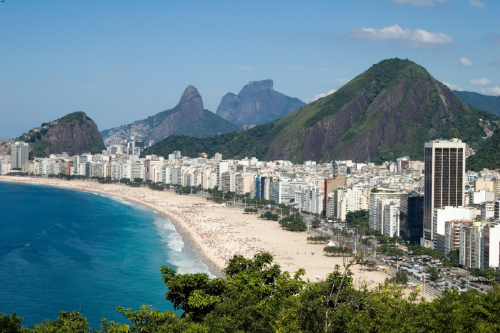
We're cheating with this one - but for anyone visiting Rio, all three of these are landmarks that are worth a visit, especially as they are within good distance of each other. One of the Seven Wonders of the World, Christ the Redeemer, stands 40 metres tall. The concrete and soapstone-made statue can be seen towering above the Brazilian city, and is just a half-hour drive from both Sugarloaf Mountain and Rio’s most-famous beach, Copacabana.
Cable cars carry visitors to the summit of Sugarloaf Mountain where stunning views of the city can be enjoyed. As well as providing a great photo opportunity, Sugarloaf Mountain is also one of the largest and most popular urban rock climbing destinations in the world.
Moving on to Copacabana beach, though busy in peak months, this is the beach where you want to be to catch the sun and to experience true Brazilian atmosphere. The crescent shaped, wide and lengthy stretch of sand is bordered by Sugarloaf Mountain on one end and the former Copacabana Fort on the other.
Galapagos Islands, Ecuador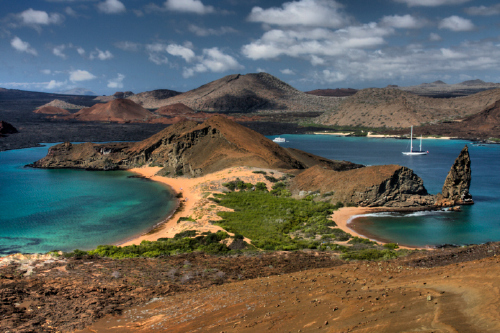
Wildlife and stunning landscapes, Ecuador’s Galapagos draws eco-tourists from all over the world who long to marvel the islands for the rich wildlife both on the ground and below the waves, including sea lions, sea turtles, giant tortoise and iguanas, to name but a few. Hike along the Darwin Trail, visit Sierra Negra Volcano on Isabela and scuba dive world-class waters at Puerto Ayora. TripAdvisor recommends visiting between January and April for the best snorkelling.
Torres Del Paine, Chile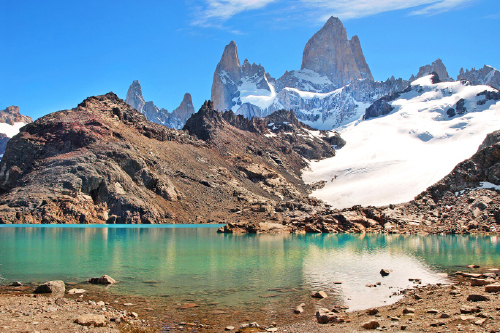
This place is every hiker and camper’s dream. The breathtaking Torres Del Paine national park is dominated by huge mountains and crystal clear lakes, making for one of the most serene places in South America to go hiking or camping. You’ll see outstanding views of glaciers, forests and far-reaching lakes. There are a number of hotels and many campsites around the national park along with well-maintained trails set up at varying difficulty levels, including many that are achievable for even the novice hiker.
Iguaçu Falls, Argentina/Brazil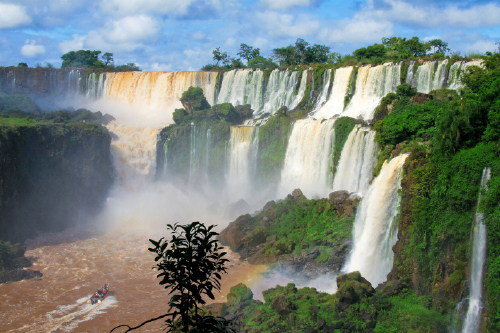
Whether you visit the Argentine or Brazilian side, this is a South American landmark that appears on many people’s bucket list. A truly magnificent spectacle of Mother Nature, Iguaçu Falls (also spelt Iguazu Falls) is shared by two national parks, both UNESCO World Heritage Sites. An abundance of flora and fauna can be enjoyed along the walkways, of which there are plenty to stand on and take in the enormity of the falls. The national parks, Iguazu National Park (Argentina) and Iguaçu National Park (Brazil), also create opportunities for wildlife spotting from small creatures like butterflies and parrots to more fierce animals such as the spotted jaguar and coral snakes.
Lake Titicaca, Andes, Peru/Bolivia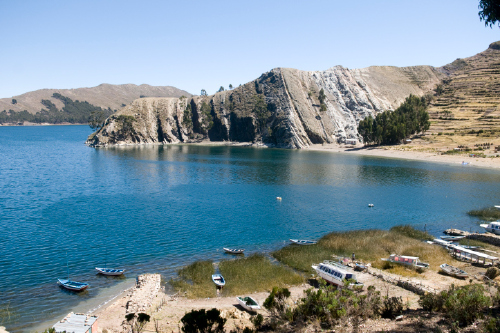 Elevated 12,500 ft above sea level, Lake Titicaca is the largest freshwater lake in South America and the world’s largest navigable lake. It is landlocked by Peru on the west and Bolivia on the east, and for many South American cultures the lake is considered a sacred place involving many legendary individuals. The lake covers 3,200 square miles and infuses both tradition and tourism with its tranquil beauty and complete serenity. If there is one place in the world worth visiting for its peacefulness, then Lake Titicaca is definitely it.
Elevated 12,500 ft above sea level, Lake Titicaca is the largest freshwater lake in South America and the world’s largest navigable lake. It is landlocked by Peru on the west and Bolivia on the east, and for many South American cultures the lake is considered a sacred place involving many legendary individuals. The lake covers 3,200 square miles and infuses both tradition and tourism with its tranquil beauty and complete serenity. If there is one place in the world worth visiting for its peacefulness, then Lake Titicaca is definitely it.
Salto Angel, Venezuela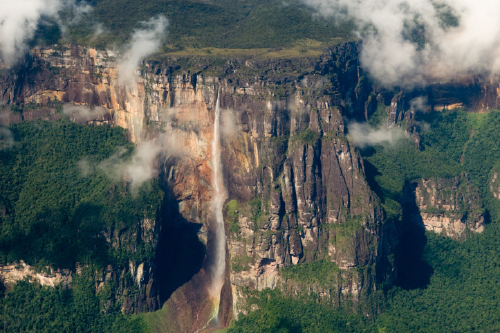
Salto Angel, or Angel Falls, is the world's highest waterfall standing around 16 times higher than Niagra Falls at a total height of 3,211 ft. The fall has an uninterrupted drop of 807m and the cascade spills off the Auyantepui, one of the largest sandstone-capped mesa, into Devil’s Canyon. There is no road access to the waterfall which sits in rough yet lush wilderness which means that visitors usually camp close by or take boat rides to the base of the falls. This magnificent waterfall is another photo opportunity that should not be missed.
Cocora Valley, Colombia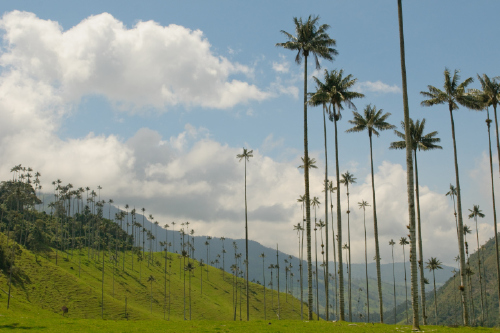
Home of Colombia’s national tree, the wax palm, Cocora Valley stretches through the area of Quindío forming some of the most dramatic horizons, as groups of wax palm trees proudly stand tall lining the valley. The rolling hills make for a stunning backdrop and depending on whether it’s raining or the sun is out; both covered clouds and a clear sky truly personify the diverse landscape to be found in Colombia.
Floralis Genérica, Buenos Aires, Argentina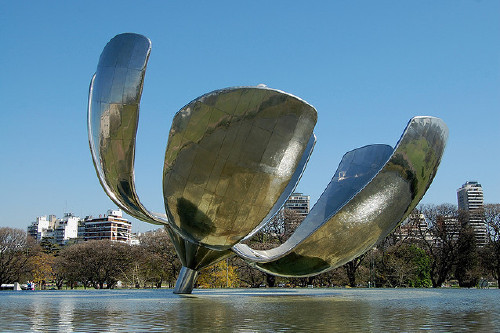 Image courtesy of barbutti, Flickr
Image courtesy of barbutti, Flickr
This impressive robotic solar-powered flower was built in 2002. Though not the oldest landmark on this list, the sculpture, designed and funded by architect Eduardo Catalano, is certainly an impressive choice. The Floralis Genérica is a 23m high flower made of stainless steel which is said to open and close its huge metallic petals in accordance with daylight and sunset. It's at dusk and into the night that visitors can also marvel at the monuments spectacular lighting.
Tell us what your favourite South American landmarks are in the comments below or tweet us @FemaleFirst_UK
FemaleFirst
Tagged in Travel Brazil travel tips Travel Advice Landmarks

